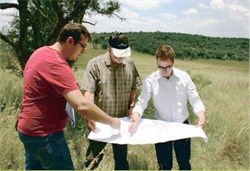
Subscribe & Follow
#AfricaMonth
Jobs
- Customer Service Johannesburg
- Industrial Property Broker Durban North
- Administrative Operations Coordinator Cape Town
- Freelance Relocation Consultant Cape Town
- Commercial Property Facilities Manager Durban
- Bookkeeper Stellenbosch
- Commercial and Industrial Property Broker Durban
- Commercial and Industrial Property Broker Johannesburg
- Commercial and Industrial Property Broker Cape Town
In the news
E&V Potchefstroom builds first green home in the area: Part 1
Call it a case a study

"We are extremely proud of our Potchefstroom shop for taking on the initiative. Engel & Völkers is not just about selling homes, but about families, people and lifestyles. Individuals like Carl Venter, our licence partner and instigator of the Green House Project, really set an example for all to ensure a greener tomorrow," says Craig Hutchison, CEO of Engel & Völkers Southern Africa.
The project commenced on 21 January 2014 with the help of Engel & Völkers Potchefstroom and Devilliers du Toit Architects in Pretoria. The green home will be monitored for 12 months by experts from the North West University in order to evaluate the effectiveness of the various green technologies used in the specific climate.
"This can then be used as a guideline for developers that want to be at the forefront of green building and for homeowners that want to go green with their existing homes," shared Venter. "We would like to assist people by providing them insight and information on how each individual can make a difference, no matter the scale."

Step 1: Location
- The placement of the house on the stand is the first step towards energy and cost savings.
- The green house will be placed in such a way that it makes optimal use of the natural surroundings. Trees will be retained, preserved and incorporated into the layout of the house so that the most is made of the shade they offer.
- The property's placement on the stand is planned in such a way as to make full use of the magnificent views to all sides.
- The position of the sun is taken into account to ensure that the house receives passive heating in winter and that the house is sufficiently protected in the summer.
- The prevailing wind directions are considered for natural ventilation of the house as well as to ensure adequate protection of the outdoor living areas.
Step 2: Focused green activities
- Choose the right building team: The architects, contractors and design team must all be green building specialists with experience in green building methods.
- A construction plan will ensure that any disruption to natural surroundings is kept to a minimum during building.
- The layout of the house will enable the residents to live in harmony with nature.
- Energy consumption will be monitored over the 12 months by experts to assess the effectiveness of the green technology used and to evaluate the best sources.
- Water usage will be monitored to ensure effective management of water consumption.
- Storm water will be managed by the choice of finishes used on the ground. These will be less solid and will seamlessly blend in with the environment.
- Water-saving appliances will be used, in order to ensure that less water is wasted on the sewage system.
- Lighting used will not negatively impact the wildlife or the night skies.
- The size of the house is meaningful and not redundant.
- The end user will receive a guide to assist them in understanding how all the green technology works.
More information and updates on this Go Green project will be provided in Part 2 of this series.
Related
Global recognition as SA wins 2024 ESG Communication Award 20 Mar 2025 SA economy: Negative trends are reversible - if the right steps are taken 19 Dec 2024 SADiLaR director elected as fellow of the Zimbabwe Academy of Sciences 19 Jun 2024 #YouthMonth: BET Software salutes the torchbearers of tomorrow who dare to dream 4 Jun 2024 SADiLaR funding helps launch the ǂKhomani | Hugh Brody Archive 25 Apr 2024 NWU Chartered Accountancy students excel in 2024 ITC 15 Apr 2024











